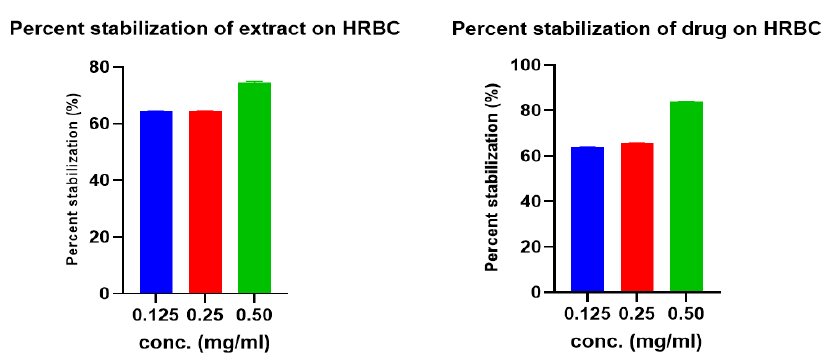Hydroethanolic Leaves Extract of Amaranthus Cruentus Protects Against Lead-Induced Hepatorenal Toxicity in Rats
DOI:
https://doi.org/10.15419/bmrat.v11i5.892Keywords:
Amaranthus, hydroethanolic, hepatorenal, bioactive compoundAbstract
Introduction: Liver and kidney disorders are of substantial concern in global health, posing significant challenges due to the unwanted side effects often associated with conventional treatment drugs. The exploration of natural antioxidants for their management has garnered attention due to the potential for fewer side effects. This study focuses on the protective effects of Amaranthus cruentus hydroethanolic leaf extract (HE) against lead-induced hepatorenal toxicity in rats, aiming to provide a safer alternative in managing these conditions.
Methods: The study embarked on a comprehensive assessment involving phytochemistry, heavy metal analysis, in vitro antioxidant, and anti-inflammatory activities of the hydroethanolic leaf extract. Lead-induced hepatorenal toxicity was established in rats through intraperitoneal injection at 25 mg/kg body weight. Following this, oral treatments were administered at varied dosages of 100 mg/kg, 250 mg/kg, and 500 mg/kg body weight respectively. Evaluations were made using hematological, biochemical, inflammatory indices, and histological assessments to determine the extract's protective efficacy.
Results: The phytochemical analysis revealed a rich presence of phenols, flavonoids, saponins, tannins, coumarins, cardiac glycosides, and steroids. Also detected were heavy metals including Fe, Cd, Pb, and Ni. In terms of antioxidant capacity, the DPPH percentage inhibition was noted at 72.4 ± 0.002. The total phenol and flavonoid contents were quantified at 1832.88 ± 11.96 mg GAE/100g and 196.47 ± 1.23 mg QE/g, respectively. The HRBC membrane stabilization exhibited a range between 64.4 - 74.7%, compared to the standard drug, diclofenac sodium, which ranged between 63.9 - 84.02%. Significant restoration was observed in the levels of ALT, AST, ALP, bilirubin, albumin, globulin, urea, and creatinine. Furthermore, the NLR and PLR levels were significantly reduced. Histopathological examinations also disclosed significant alleviation in liver and kidney damage.
Conclusion: The investigation highlights the considerable potential of using natural antioxidants from food crops like Amaranthus cruentus in managing liver and kidney disorders. The study demonstrated that the hydroethanolic leaf extract could significantly mitigate lead-induced hepatorenal toxicity in rats, showcasing an effective restoration of biochemical, hematological, and histopathological parameters. This suggests that the extract offers a promising alternative with minimal to no side effects, meriting further exploration for clinical application in liver and kidney disease management.

Published
Issue
Section
License
Copyright The Author(s) 2017. This article is published with open access by BioMedPress. This article is distributed under the terms of the Creative Commons Attribution License (CC-BY 4.0) which permits any use, distribution, and reproduction in any medium, provided the original author(s) and the source are credited.
